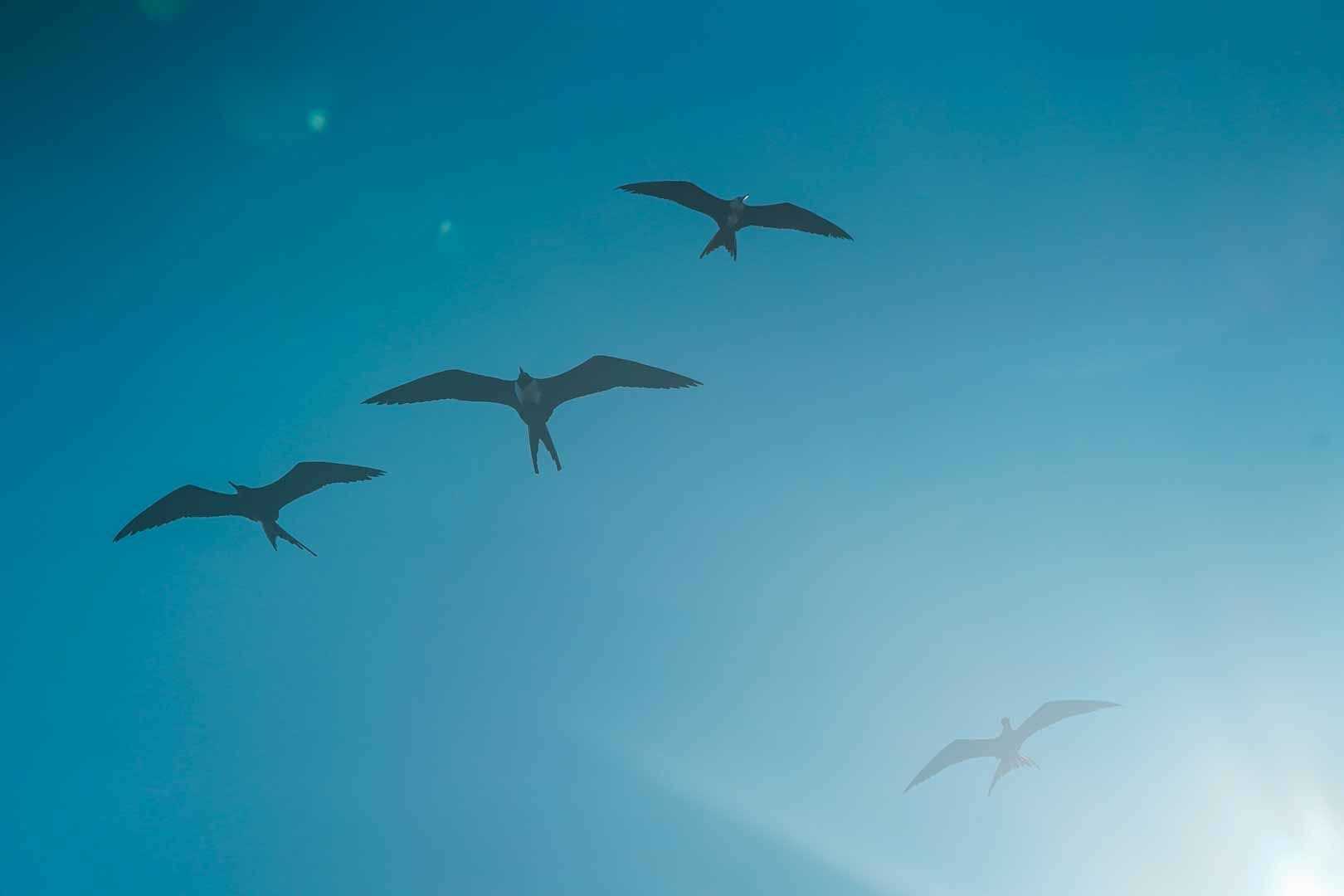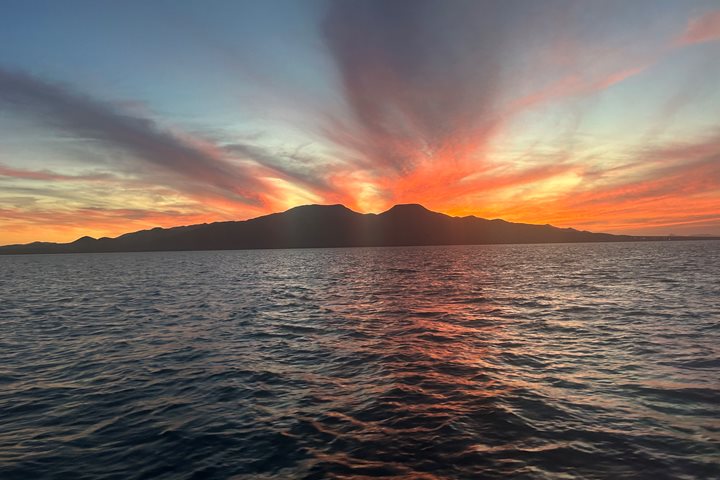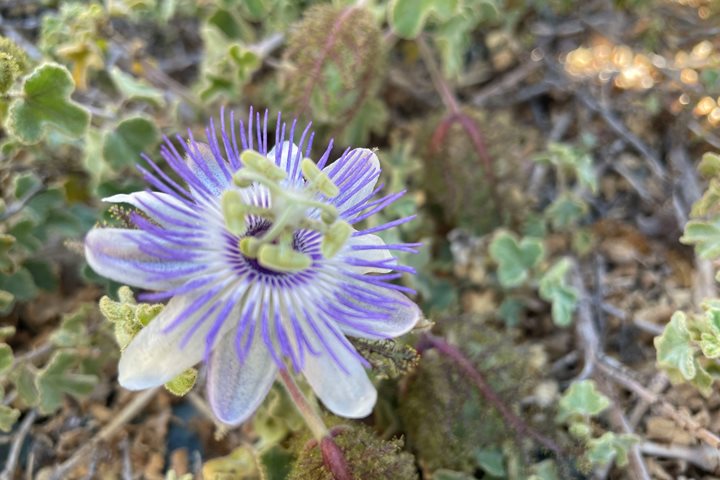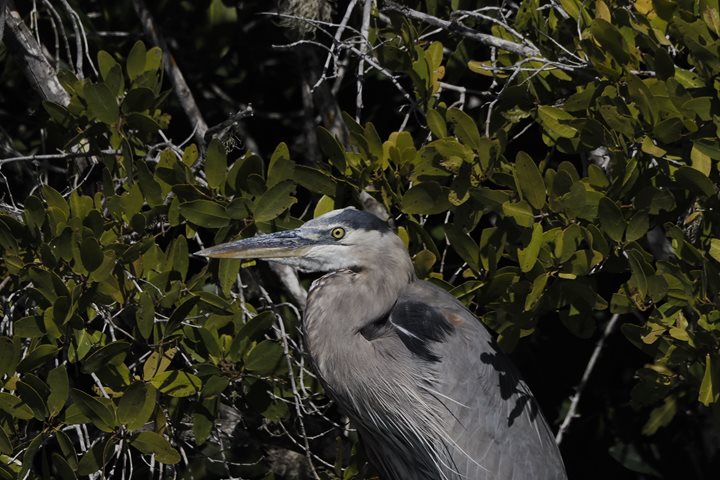Our day began with gray in every direction as heavy fog surrounded National Geographic Sea Lion at our anchorage off Isla Santa Margarita, near the southern extent of Magdalena Bay. Quickly, the fog lifted and gave way to a different kind of gray: whales! Guests boarded local pangas to search for these massive marine mammals that migrate some 6,000 miles from the Arctic to the warm and protected calving lagoon here. In Bahia Almejas we spotted many, many adult and sub-adult whales that displayed all types of activity, spy-hopping above the surface and approaching boats for a friendly scratch. Knowing that just over a hundred years ago the whales were almost hunted to extinction here made the close encounters all the more special. We continued our adventures with visits to a large frigate bird colony among the bordering mangroves and kayaking and paddle boarding near the sand dunes of Isla Magdalena to the North. All in all, an incredible introduction to the wonders of Baja and Magdalena Bay.
- Daily Expedition Reports
- 28 Jan 2020
Bahia Almejas, 1/28/2020, National Geographic Sea Lion
- Aboard the National Geographic Sea Lion
- Baja California
Alex Krowiak, Naturalist/Certified Photo Instructor
A childhood surrounded by the woods and streams of Pennsylvania initially sparked Alex’s curiosity about nature. That curiosity eventually led him to pursue degrees in biology and environmental studies at Boston College. During his time there he cond...
Read MoreRoss Weinberg, Videographer
Born in Hollywood with a camera in his hand, Ross is a documentary filmmaker and photographer who is inspired by a good-organic-wholesome-LA-vegan cause and strives to raise awareness wherever he can through his pictures and films. While majoring in ...
Read MoreShare Report
Baja California: Observing the Whales of Magdalena Bay
VIEW ITINERARYRelated Reports
3/15/2025
Read
National Geographic Sea Bird
Puerto Magdalena
Walks in the desert can hold a plethora of surprises, and today was no exception. From clusters of scarlet Palo Adan flowers, the gems of the morning, to purple and white striped passion flowers. The numerous fruits on the vine attested to a series of flowers earlier this month. A diminutive bird, the verdin, was also interested in the Palo Adan flowers. The verdin’s short beak cannot reach the nectar, so this bird approaches the base of the flower, nips it open, and takes a nectar reward; pollination of the flower is thwarted in this thievery. The exoskeleton of a tarantula was found under the scrub, an indication of a spider that has molted and grown a bit bigger. At the end of the trail, we were all rewarded with a magnificent view of the Pacific Ocean. Good things come to those who venture outdoors.
3/14/2025
Read
National Geographic Sea Bird
Boca de la Soledad
Today we woke up in the northernmost part of Magdalena Bay. In the morning, we went whale watching at Boca de la Soledad, where we came across a mother and calf. Later, we went to Estero Chivo at high tide, where we observed a variety of birds. We were particularly interested in the numerous shorebirds, egrets, and herons. We raised anchor to continue our day. While transiting Hull Canal, we spotted bow-riding bottlenose dolphins. National Geographic Sea Bird set anchor in front of Magdalena Island. The wind was blowing, causing the dunes to come alive. After walking among dunes and desert plants, we arrived at the Pacific coast of Magdalena Island. We enjoyed walking along the beach and observing various shells, snails, and sand dollars. In the distance, we spotted the carcass of a beached gray whale and contemplated both life and death. These animals begin their lives on the coast of Mexico, and their cycle also ends here.









